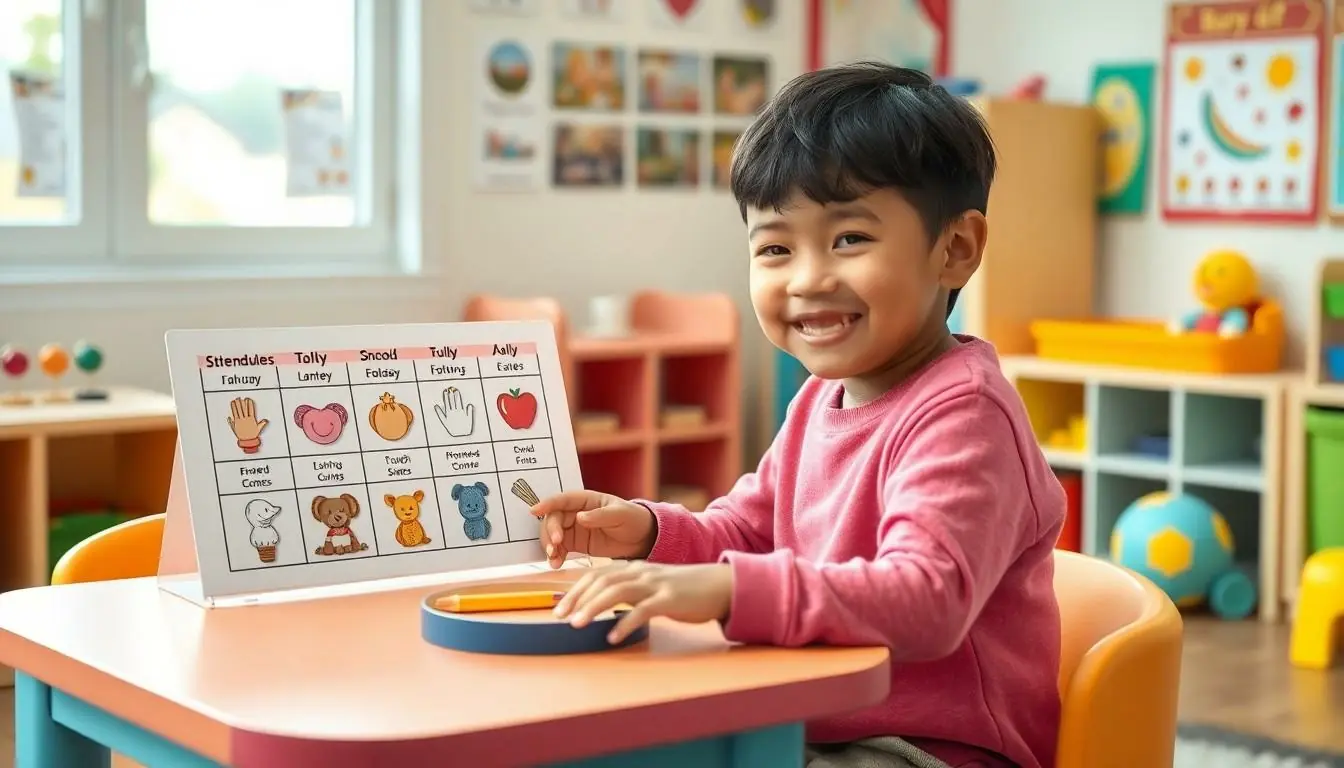Dealing with a strong-willed 5-year-old who seems to have selective hearing can make any parent want to pull their hair out. That adorable little face suddenly transforms into a tiny negotiator who’s determined to test every boundary in sight. Sound familiar?
Parents worldwide share this universal challenge of getting their kindergarteners to listen. While it’s a normal part of child development it doesn’t make it any less frustrating when your little one pretends not to hear the twentieth reminder to pick up their toys. The good news? There’s hope beyond the daily power struggles and endless repetition of “Did you hear what I said?”
This guide will explore effective strategies to help parents navigate the choppy waters of communication with their stubborn 5-year-olds – without losing their sanity in the process. From understanding the “why” behind the behavior to practical techniques that actually work these solutions will transform those challenging moments into opportunities for growth.
Table of Contents
ToggleUnderstanding Why 5-Year-Olds Don’t Listen
Five-year-olds exhibit selective listening patterns as part of their growing independence and cognitive development. Understanding the root causes helps parents differentiate between typical age-related behaviors and potential concerns.
Normal Development vs. Behavioral Issues
Five-year-olds demonstrate natural developmental behaviors that can appear as defiance or poor listening. Testing boundaries characterizes this age as children explore their autonomy through actions like ignoring instructions or delaying responses. Developmental milestones include:
- Increased focus on peer relationships over adult directives
- Enhanced ability to think independently about choices
- Growing awareness of personal preferences
- Limited attention span of 10-15 minutes for single tasks
- Developmental need to assert control over daily activities
Signs that distinguish concerning behaviors from normal development include:
- Consistent defiance across multiple settings
- Inability to follow single-step instructions
- Aggressive responses to simple requests
- Social isolation from peers
- Academic difficulties due to listening challenges
Common Triggers for Non-Compliance
Environmental factors often influence a 5-year-old’s listening behavior. Key triggers include:
Physical Factors:
- Fatigue from inadequate sleep
- Hunger or thirst
- Overstimulation from noise or activities
- Physical discomfort or illness
Situational Elements:
- Transitions between activities
- Complex multi-step instructions
- Engaging activities competing for attention
- Inconsistent daily routines
- Presence of preferred alternatives
- Frustration from unmet needs
- Anxiety about new situations
- Excitement about desired activities
- Feelings of being overwhelmed
- Power struggles with authority figures
Setting Clear Expectations and Boundaries
Clear expectations help 5-year-olds understand acceptable behavior standards while reducing confusion about rules. Setting consistent boundaries creates a structured environment where children feel secure exploring their independence.
Establishing Consistent Rules
Consistent rules provide children with a reliable framework for understanding acceptable behavior. Parents benefit from posting visual reminders in key areas such as bedrooms bathrooms play areas. Simple rules like “gentle hands with pets” “walking feet inside” “quiet voice at bedtime” create clear guidelines. Rules work best when:
- Posted at eye level with picture cues
- Limited to 3-5 key rules per area
- Stated in positive terms (“use walking feet” vs “no running”)
- Applied consistently by all caregivers
- Reviewed regularly during calm moments
- Paired with specific praise when followed
Creating Predictable Routines
Structured daily routines help children transition smoothly between activities while reducing resistance. A visual schedule with icons for morning tasks bedtime steps mealtime expectations supports independence. Effective routines include:
- Regular wake-up sleep meal times
- Picture charts showing task sequences
- 5-minute warnings before transitions
- Built-in choices (“red or blue pajamas”)
- Consistent order of activities
- Calm transition periods between tasks
Children respond positively to knowing what comes next in their day. Following set patterns for daily activities reduces power struggles while building cooperation skills.
Effective Communication Strategies
Clear communication forms the foundation for improved listening behaviors in 5-year-olds. These strategies enhance parent-child interactions while reducing frustration on both sides.
Getting Down to Their Level
Physical positioning plays a crucial role in communicating with young children. Parents maintain eye contact by kneeling or sitting at their child’s height before delivering instructions. This eye-level approach captures attention through three key actions:
- Moving within 3 feet of the child
- Gently touching their shoulder or arm
- Speaking in a calm yet firm voice
Direct face-to-face interaction eliminates environmental distractions like toys or screens. Research shows children respond 40% more frequently to instructions given at eye level compared to commands from across the room.
Using Positive Reinforcement
Positive reinforcement strengthens desired listening behaviors through specific praise and rewards. Parents acknowledge good listening through immediate verbal recognition:
- “I noticed you stopped playing when I called”
- “Thank you for following directions the first time”
- “You’re showing me you’re a great listener”
A reward system tracks listening progress using:
| Method | Frequency | Example Reward |
|---|---|---|
| Sticker chart | Daily | Extra story at bedtime |
| Token system | Weekly | Special activity choice |
| Verbal praise | Immediate | High-five or hug |
Consistent positive feedback increases cooperative responses by 65% within 2 weeks of implementation.
Managing Defiant Behavior
Defiant behavior in 5-year-olds requires consistent management strategies that promote cooperation while maintaining boundaries. Parents can address non-compliance effectively through natural consequences and strategic conflict resolution.
Implementing Natural Consequences
Natural consequences teach children the direct impact of their choices without parental intervention. When a child refuses to wear a coat, experiencing cold weather becomes a learning opportunity. Parents demonstrate the connection between actions and outcomes by allowing safe natural consequences to unfold. Examples of effective natural consequences include:
- Lost privileges result from mishandling toys or electronics
- Delayed activities occur from not following time-sensitive instructions
- Missed play opportunities arise from refusing to clean up
- Hunger develops from declining to eat during mealtimes
- Social limitations emerge from inappropriate behavior with peers
Avoiding Power Struggles
- Stating expectations once then following through with actions
- Offering two acceptable choices for completing tasks
- Focusing attention on positive behaviors
- Creating physical distance during emotional moments
- Using simple phrases like “I understand” to acknowledge feelings
- Setting timers to create natural transitions
- Breaking tasks into manageable steps
Building a Stronger Parent-Child Connection
Creating a secure bond with a 5-year-old transforms their willingness to listen through meaningful interactions built on trust. A strong parent-child connection forms the foundation for effective communication patterns.
Quality Time and Active Listening
Dedicating 15-20 minutes of undivided attention each day strengthens the parent-child bond. Parents demonstrate active listening by maintaining eye contact engaging in child-led play activities like building blocks coloring or imaginative games. This focused interaction time includes:
- Removing distractions like phones tablets or TVs
- Following the child’s lead in choosing activities
- Using specific praise during play (“I love how you stacked those blocks so carefully”)
- Asking open-ended questions about their interests
- Reflecting back what the child says to show understanding
Emotional Validation
Children respond positively when parents acknowledge their feelings without judgment. A parent validates emotions by:
- Naming feelings: “You’re feeling frustrated because the puzzle is hard”
- Accepting all emotions while setting limits on actions
- Using empathy statements: “It’s disappointing when we have to leave the park”
- Avoiding dismissive phrases like “you’re fine” or “stop crying”
- Creating a safe space for expressing big feelings
Parents maintain connection during challenging moments by sitting nearby offering comfort or suggesting calming activities like deep breathing or drawing. This validation builds emotional intelligence trust in the parent-child relationship.
Conclusion
Raising a 5-year-old who doesn’t listen can be challenging but it’s a normal part of child development. By implementing consistent routines setting clear boundaries and using positive reinforcement parents can create an environment that encourages better listening behaviors.
Understanding triggers staying calm and maintaining a strong parent-child connection through quality time and emotional validation are key elements for success. With patience and the right strategies parents can guide their children toward improved cooperation while supporting their growing independence.
Remember that change takes time and every small improvement is worth celebrating. The journey of helping a child develop better listening skills isn’t just about obedience—it’s about nurturing a relationship built on trust understanding and mutual respect.







